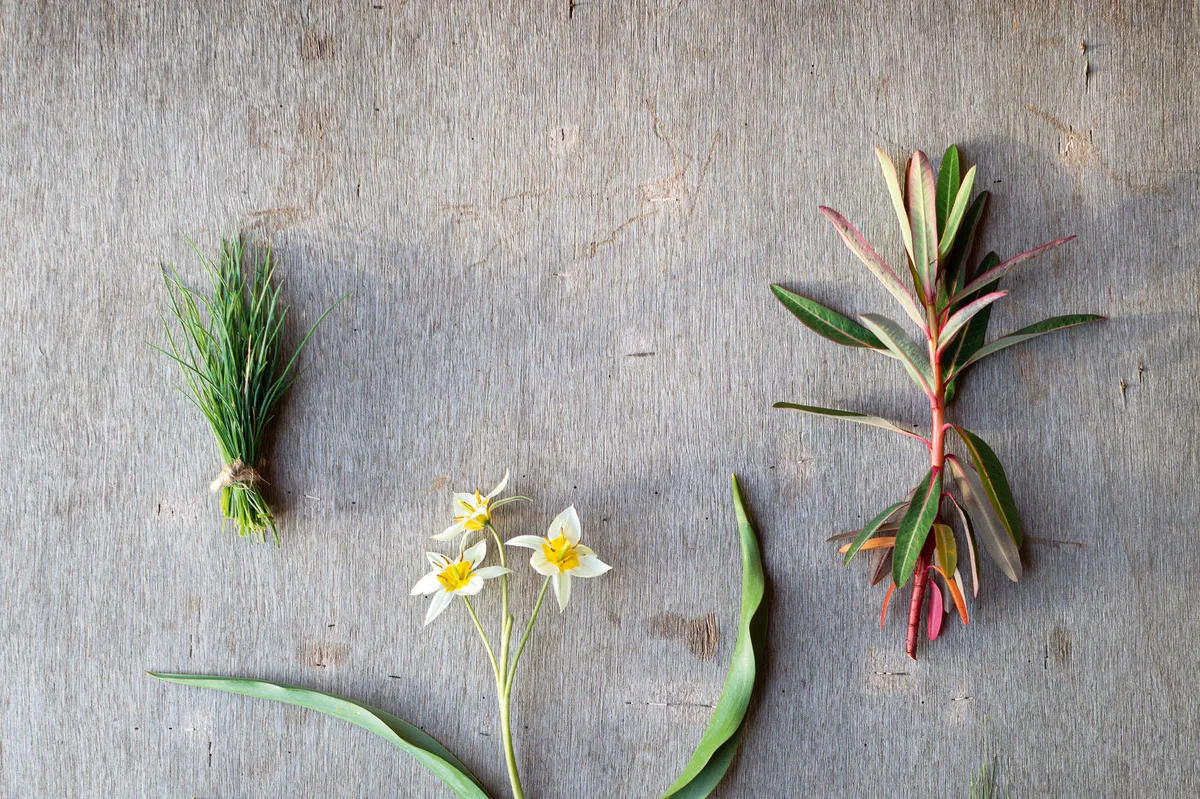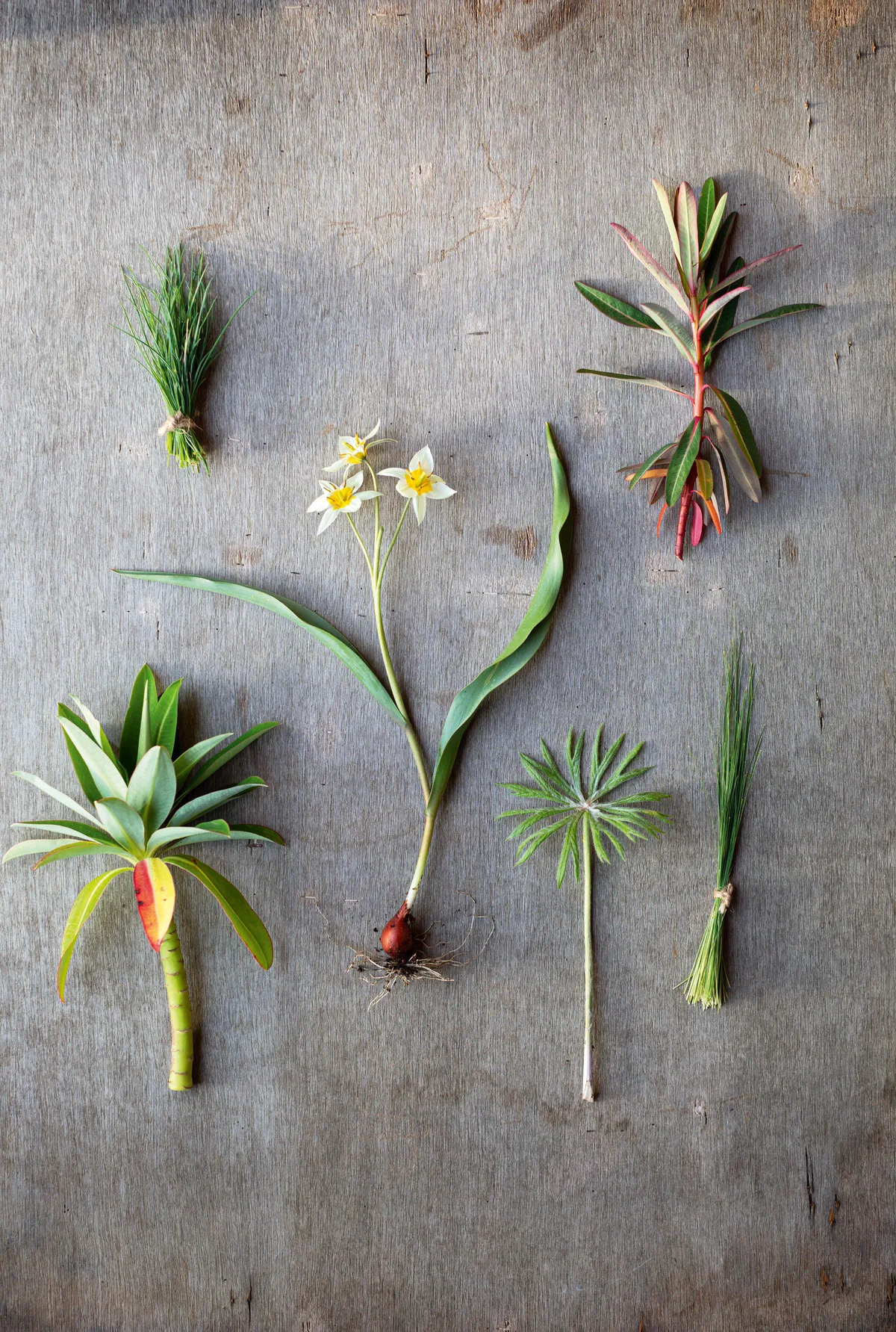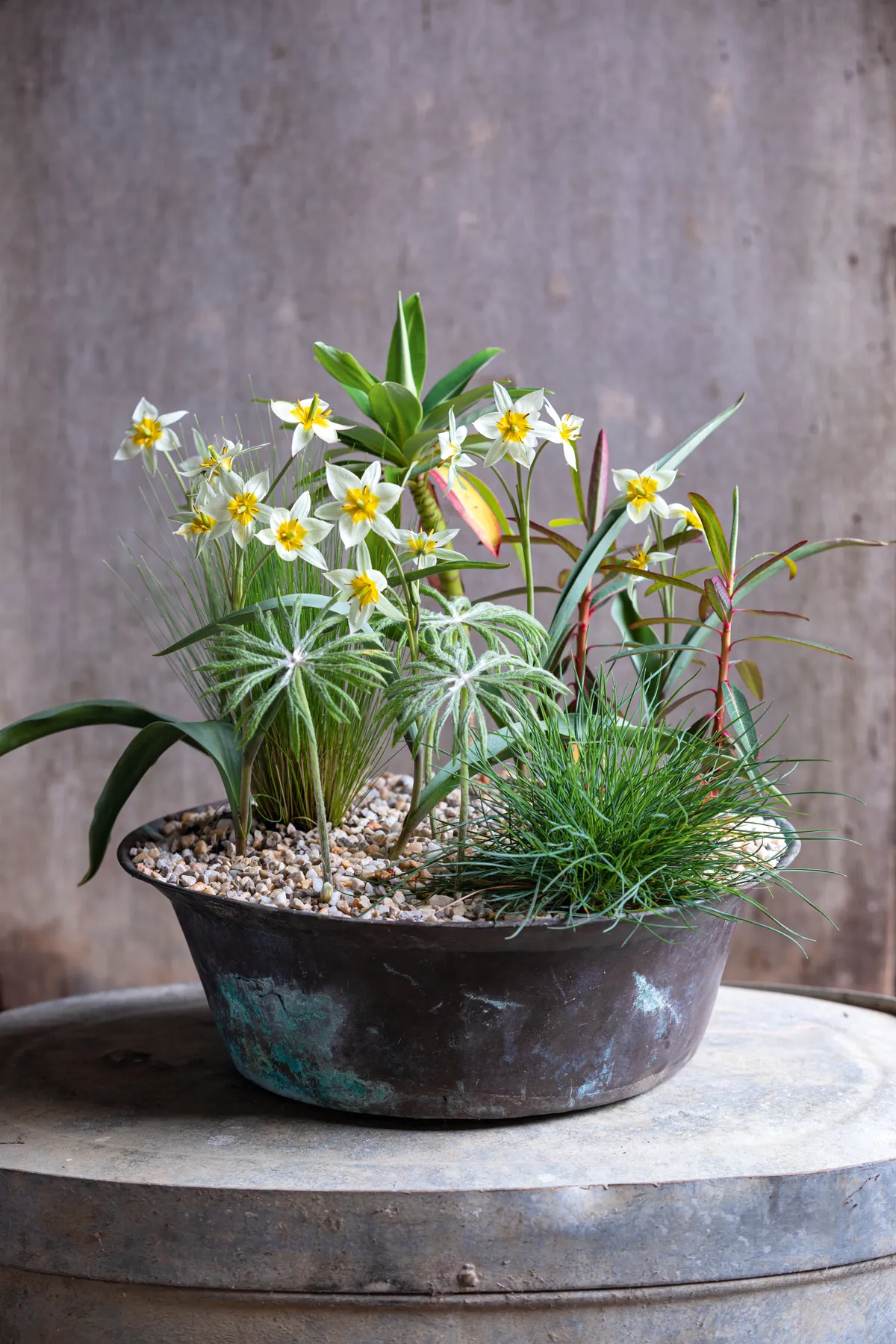When I first saw the Syneilesis aconitifolia in my local nursery I knew I had to have it. When young, its blue-green architectural leaves are covered in downy hairs, and it’s impossible to resist stroking them. I’ve used it here among blue-green foliage plants of contrasting structure and texture – the soft tufts of Festuca glauca, the wiry stems of Stipa tenuissima and the glaucous, fleshy leaves of the euphorbias – in a combination that is interwoven with silver-leaved Tulipa turkestanica.

How to achieve the look
Container and composition
For this arrangement of spring plants, I felt it was important to keep the container simple so that it didn’t detract from the structure and form of the plants. I came across this beautiful bowl in one of the sheds at work and its simple yet elegant shape is perfect. I love how the greeny-blue of the metal picks up the colour of the Festuca foliage. The bowl is nice and deep, allowing enough depth to support the tulip bulbs. I topped off the pot with a fine, pale gravel to keep the overall look clean and crisp and to set off the shapes and colours of the leaves. Come autumn, I can remove everything from the bowl and pot the perennials up into larger containers or plant out into the garden.
Cultivation and care
- Tulip turkestanica, like most bulbs, needs to be planted at three times its own depth, so it is important to ensure that the container is deep enough to accommodate this.
- To add more colour into the arrangement you could substitute Tulipa ‘Peppermintstick’ or Tulipa humilis ‘Persian Pearl’, both of which would link with the reds found in the new growth of the euphorbias. All of the plants I’ve chosen, although relatively slow growing, will eventually outgrow the space available in the bowl.
- When planting, I like to incorporate a slow-release fertiliser to make sure there are adequate nutrients to go round.
- Keep the container well watered and as plants get bigger, feed once a week with a general-purpose liquid feed.
Plants

From left to right
Festuca glauca Intense Blue (=‘Casblue’) This grass provides year-round, steely blue foliage in soft, neat mounds. 30cm. AGM. RHS H5.
Tulipa turkestanica Star-shaped, white-and-yellow flowers are held on grey-green stems. 30cm. AGM. RHS H5, USDA 3a-7b.
Euphorbia sikkimensis ‘Crug Contrast’ Erect herbaceous perennial with lime-green bracts in summer. New stems emerge red. 1.5m. RHS H5.

From left to right
Euphorbia x pasteurii ‘John Phillips’ Mid-green leaves with a striking pale midrib. New growth glows vivid red in autumn to winter. 1m. AGM. RHS H4.
Syneilesis aconitifolia Umbrella-shaped leaves with deep, jagged divisions, covered in silky hairs. 1.2m. RHS H7, USDA 4a-8b.
Stipa tenuissima An upright feathery grass. Flowers late summer. 1m . RHS H4.
This feature ran in March's issue of Gardens Illustrated magazine. Subscribe here


